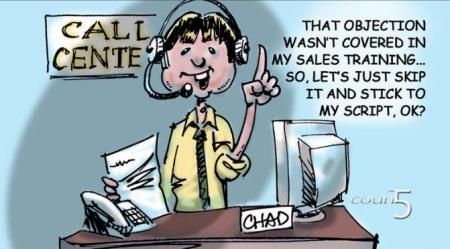Skip to content
Homeowner’s Beware of the Cash Out Mortgage Solicitation
Beware of the “Cash Out” mortgage solicitation, not all cash-back mortgages these days are as good as they sound, and some are detrimental.

Dear Friend & Homeowner,
Are you overwhelmed with solicitations from mortgage lenders who are trying to get you to refinance? If you’re like me, you’d probably love to have $10 for every letter/postcard, email or phone solicitation that you’ve had in the past few months from lenders trying to convince you of tapping into your home’s equity. In the mortgage industry, getting a new first mortgage for an amount greater than you currently owe is what we call a Cash-Out refinance. You can bet the solicitations for cash-out mortgages will only increase in the near future. The current landscape causing the increase in solicitations for the Cash-Out mortgage is twofold:
1. Interest rates have gradually increased from the when they hit their low in December of 2012. As we head into October 2018, the 30-year mortgage is quickly approaching 5.00% for even grade-A credit borrowers.
To see the 30-year mortgage rate history click here.
2. Americans now have the highest amount of tappable equity in history. For further reading click here.
There are a number of lenders who have specialized mainly in the refinancing of mortgages. Based on the number of licensed loan officers nationwide, there may be in the 10’s of thousands who have made their entire career out of refinancing. Most professionals have a niche, and there’s nothing wrong with specializing in refinances. Since the post-bubble years, this widespread refinance activity has served the public well for the most part, as many people have been able to take advantage of refinancing into lower APR’s. This type of refinancing designed to lower one’s APR, or annual percentage rate, without borrowing additional money is known as the rate & term refinance.
But as of September 25th, 2018, the rate & term refinance has pretty much run its course, and the refinance market for those borrowers has been diminished substantially. To put it another way, most of the homeowners that needed to refinance to a lower APR (and could), have already done so.
As mortgage rates continue to increase, the lenders and loan officers who specialize in refinances must find something other than the depleted rate & term refinance market to sell in order to maintain their closing volume. This is why the cash-out mortgage is the one remaining type of refinance that can be marketed to the aggregate and can then even be targeted to more specific groups. For example, Veteran’s are most susceptible to cash-out refinance solicitations because most Veterans can finance up to 100% of their home’s value. In today’s age of big data, the guys soliciting cash-out refi’s have lists of who have VA mortgages, what the Veteran paid for their home and a good idea of what the Veteran’s home is currently worth. Earlier this year, Ginnie Mae, who is the government agency that provides the secondary market for VA loans, penalized 9 lenders for targeting Veteran’s, and for churning VA refinances. But, the marketing to induce homeowners to apply for cash-out mortgages has now become very aggressive and is being directed toward almost all homeowners, not just Veterans. Some of these lenders won’t hesitate to close on a cash-out refinance even if it puts the homeowner in a much worse position in the long run due to the new mortgage having a note rate much higher than their prior rate. Obviously, this increases the homeowner’s APR, but it doesn’t stop there. The new cash-out mortgage contains closing fees and finance charges that are deducted out of the cash-out portion of the loan proceeds. The fees and finance charges deducted from the loan proceeds drives up the APR even higher.

As a Loan Officer, I have personally chosen to specialize in the purchase market since 1987. Yet, during my career, I have reached out to successfully refinance hundreds of my past customers and their referrals when the market has changed to where they would stand to benefit by lowering their rate, many times also reducing or eliminating their mortgage insurance. Over the years, I have also closed dozens of cash-out refinances for my past customers and their referrals by applying this simple test:
“Does this refinance benefit them now, and does this refinance benefit them long term?”
And that my friends, is where we need to be careful. There are many lenders who will not be looking out for a potential customer’s best interest. In the mortgage industry, this term is known as predatory lending. Predatory Lending can be described from Investopedia as the unscrupulous actions carried out by a lender to entice, induce and assist a borrower in taking a loan that carries high fees, a high-interest rate, strips the borrower of equity or places the borrower in a lower credit rated loan to the benefit of the lender. As with most things of a dishonest nature, new and different predatory lending schemes frequently arise. It is hoped that memories are not short, and lenders do not return to higher risk/higher rate loan products designed to push the envelope in “Cash-Out” refinancing which may result in a new gray area of predatory lending.
By no means, are all cash-out mortgages a bad thing. A cash-out mortgage can be very beneficial when used to consolidate higher interest rate credit cards and other higher rate debt into one more manageable monthly mortgage payment. This is most effective when the new mortgage has a lower APR than the prior mortgage’s APR, combined with the APR of consolidated consumer debt that is paid off with the proceeds of the cash-out refinance. Ask questions! There are many aspects of cash-out refinancing that the solicitors won’t tell you or don’t even know how to explain to you. Many might even bury the official Dodd/Frank Loan Estimate deep in the paperwork of the file so that it is overlooked. Now that interest rates are higher than they have been in the past 7 years, one should compare the numbers before deciding whether a cash-out refinance is for them.
Someone who is considering a Cash-Out refinance might ask:
1. What are the finance charges for the refinance in relation to the cash out you are to be receiving?
Are you paying $2,000 – $4,000 in finance charges to get $100,000 cash out, or to only get $10,000 out? It makes a difference.
2. What is the new interest rate you will be refinancing at in relation to the cash out you will be receiving?
Are you borrowing $200,000 at 4.875% to pay off a $50,000 mortgage that is currently at 3.75% in order to get $150,000 cash back for debt consolidation?
Or, are you borrowing $200,000 at 4.875% to pay off a $150,000 mortgage that is currently at 3.75% in order to get only $50,000 cash back for debt consolidation? It makes a difference.
3. Would a low fee, or no fee HELOC (Home Equity Line of Credit) be more cost effective in accessing your home’s equity over a cash-out refinance? Based on what your current interest rate is, and what you would be refinancing into for a new first mortgage (cash-out), the HELOC should make the most sense for many homeowners as of September 25th, 2018. This is because the homeowner can keep their current interest rate, which is most likely lower than what they would receive with a new cash-out refinance, while the HELOC will have little to no fees. The homeowner can then work on accelerating additional pre-payments on the HELOC over their first mortgage, assuming the HELOC has a higher interest rate than their first mortgage.

This blog is not intended to talk anyone out of getting a cash-out refinance. Rather, to make sure that everything is disclosed and explained to you. Do the math. 😊 Does the refinance make sense? Or, is there a more economical way to accomplish your goals? As always, feel free to check with me if you would like me to calculate a cost/benefit analysis for you on the possibilities of refinancing, or if we can be of assistance in any way.




